| Series |
|---|
New Year, New Hardware!
I’m sure everyone knows by now – I am a huge nerd for gadgets, controllers, tools, displays…basically anything I can fit on my desk! Well this year I have added three really cool new pieces that I think are great workflow boosters for my color suite. In this Insight – I’ll review them, and walk you through how I use them in my day to day grading.
(note: Click on images for a larger view)
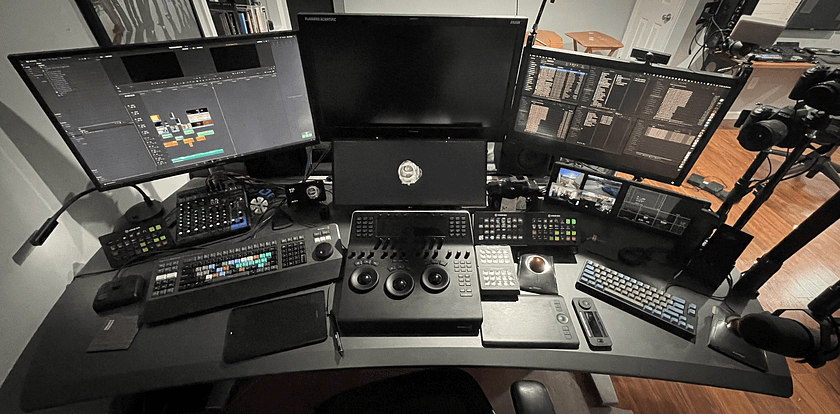
Of Course It’s Another Stream Deck
It’s no secret. I am a HUGE fan of the Elgato Stream Deck. I’ve covered how I use them many different times before and my collection just keeps growing.
I’ve got 5 of them on my desk. I use them to control everything from Resolve, to smart lights in my suite, to my ATEM switcher for live streaming sessions. From a single macro keyboard – I’ve grown my use of Stream Decks into a connected and integrated control solution where anything I need is a button press away.
Control At Your Feet
Well recently, ElGato released the Stream Deck Pedal and I figuratively and literally jumped on it, ordering it the first day it was available.
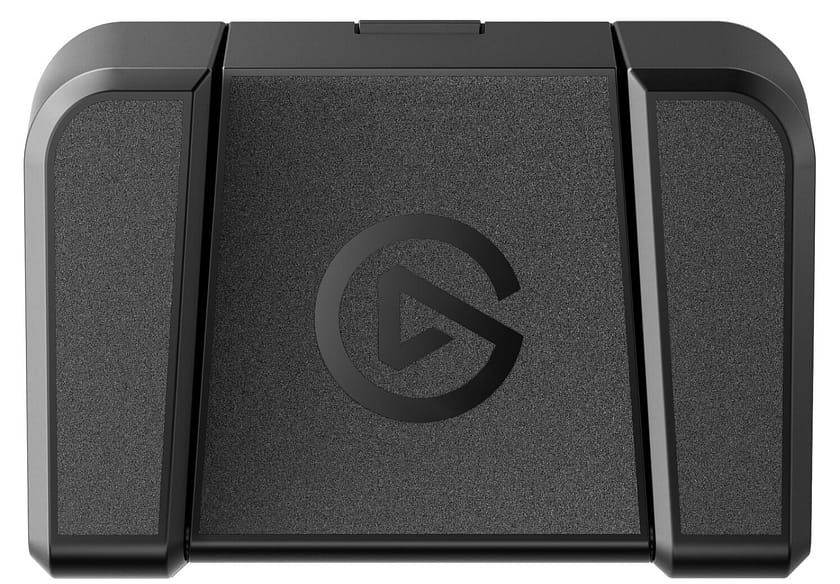
Foot pedals are no stranger to the color suite. Some old telecine systems used them for control. Quantel grading systems have supported them for a long time as well, and many colorists have used USB pedals to augment their workflow.
A few years back – I tried it myself. I ordered a couple different USB pedals, and tried to map them to commonly used tasks for grading. Instantly I saw the potential – but in practice? These cheap units were more trouble then they were worth. They had to be programmed with keyboard shortcuts on a PC, using really sketchy software, and once programmed only could ever fire 3 different shortcuts.
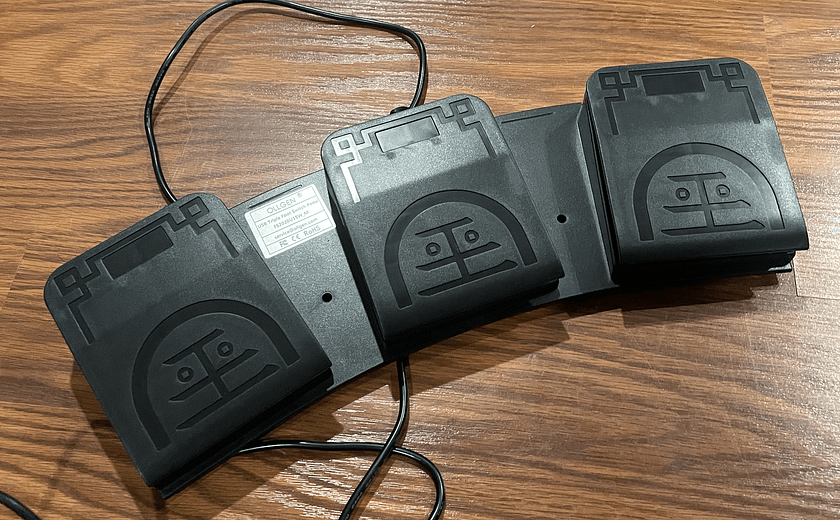
I tried mapping them to different things. Playheads, stills, memories, and they always worked OK – but I ended up mostly ignoring them. The ergonomics and feel were just too poor. I found myself missing the pedal I wanted more times then hitting it – and it was difficult to get the right “feel” for which pedal my foot was on.
What Makes The Stream Deck Pedal Different?
You could say I was enamored with the idea of using pedals for shortcuts – but the execution was severely lacking. Well just like they did with the original Stream Deck, I think Elgato knocked the foot pedal concept out of the park by giving it exceptional build quality, ergonomics, and software functionality. Lets look at those things in a bit more detail.
Build Quality
The build quality of the Stream Deck Pedal is very good, which is important for a device that sits on the floor and gets kicked all day. It also has a nice non-skid pad on the bottom stopping it from sliding around when you use it.
The switches themselves have a very nice tactile action to them, and you can feel them activating even with shoes on. They are also wide enough for people like me that have big feet and/or wear boots.
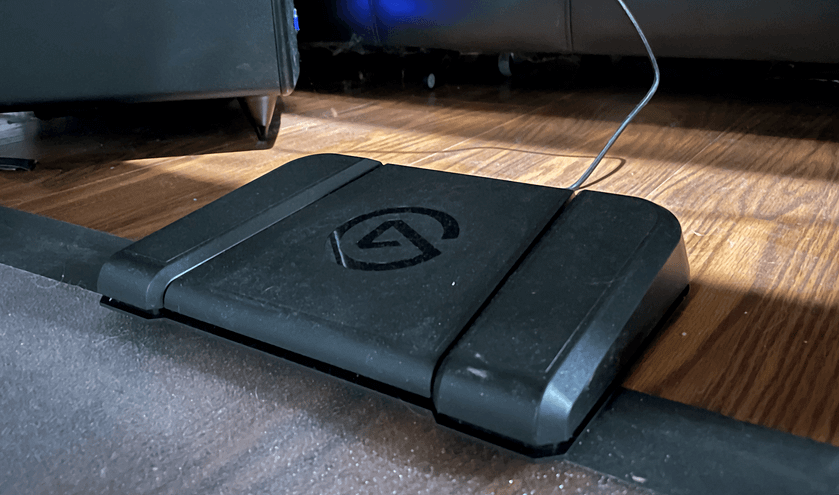
Ergonomics
This is a big one, and was my primary complaint with the cheaper pedals I had tried before. Elgato has really nailed the ergonomics of this pedal unit!
The first thing you’ll notice about it is that the outer two pedals are narrower, but taller than the center one. This provides a clear and easy way to feel your way to the pedal you want quickly, as they are clearly different elevations. The center pedal being lower was a good choice as well – as it is wider than the outer 2 pedals. This makes it super easy to go from the left or right pedal to the center one – with either foot, without any guesswork or accidental misses.
The switches take a little bit of effort to activate – and in my view this is a good thing. Feet are not exactly precise instruments, so needing a pretty solid push to activate the switch is a good thing to avoid false positives.
That said – Elgato really thought these ergonomics through. While I am quite happy with the switch tension, not everybody will be. The Stream Deck pedal comes with multiple sets of looser and tighter springs for the switches, and easy instructions for replacing them. This allows you to tailor the feel to your own preference.

These replaceable springs offer another benefit – since it is designed to be serviced and adjusted, the pedal itself is easy to open up for cleaning, as floors can be a pretty bad attractor of dust and dirt.
But what makes the ergonomics of the Stream Deck pedal truly great in my view – is what I am calling a “rock forward” kind of action. What I mean by this is that the activation of the pedal is on the front of it, not the back. In use this means you can just keep your foot resting on any of the 3 pedals, without it activating. Then when you need it, just rock your foot forward slightly, and it intuitively activates.
This kind of neutral resting position makes it great for things like playheads or stills. Jumping around and matching shots with playheads, or toggling stills on and off are exactly the kind of repetitive control that pedals are great for, and not having to reset your foot position every time makes it worth using the pedals for these tasks.
Software
Software is where the Stream Deck pedal really sets itself apart from other solutions. Most programmable foot pedals are simple USB keyboard devices. You use their software to program what keys the pedals emulate, and that’s it. More advanced functions are left to you to figure out with macro software or other custom solutions. In contrast, the Stream Deck pedal integrates directly into the existing Stream Deck application. This means it is super-easy to program, and more importantly – easy to update as you experiment and dial-in your ideal functionality.
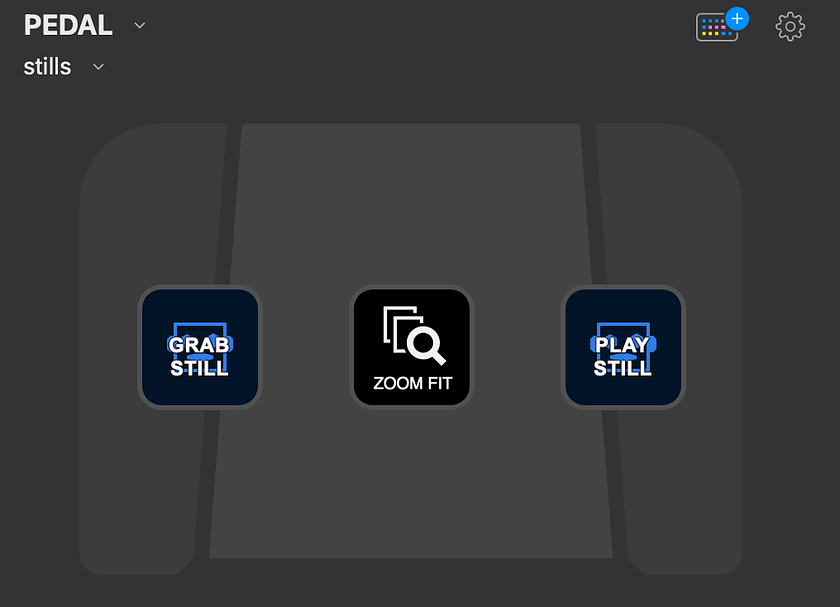
It works quite simply – the pedal shows up as another Stream Deck device, but with only 3 buttons. Each button corresponds to the 3 pedals, and any function you can do with a normal Stream Deck key can be assigned. This means macros, hotkeys, plug-ins, all work just like it was a Stream Deck.
The Power Of Stream deck Profiles
What if 3 keys aren’t enough? I have a lot of things I would like to use the pedals for, but they change with my current task. For example – if I am matching shots, I may want them as playheads. If I am doing a quick first grading pass – I may want them as navigation between shots or as memories. These different functions allow me to keep my hands on the color wheels while I use my feet for other tasks.

The good news is you can have as many profiles as you like for those 3 buttons. Profiles can be assigned to applications, so each program you use automatically has different functionality – but the way I use it is by assigning keys on my desk Stream Decks to instantly switch the functionality of the pedals. Currently I have layouts for:
- Playheads
- Navigation
- Memories
- Stills

Any of those modes are just a button press away. The software also has a toggle-able heads-up display, showing you the pedal’s current functions. I like to leave this turned on and just out of the way in the bottom right of my screen.
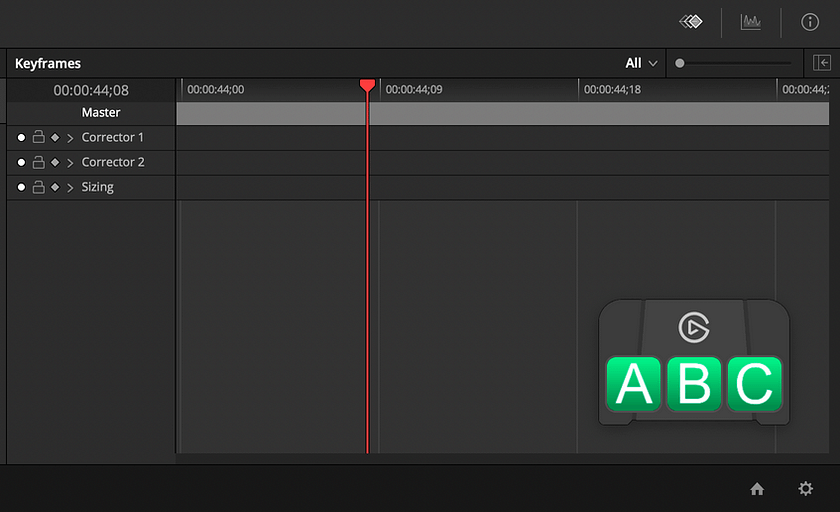
Stream Deck Pedal: My Verdict
Obviously I am a big fan of the Elgato Stream Deck line of products. I was one of the very first people to utilize them in post production, and have been steadfastly using and advocating for them ever since.
If you already are using Stream Decks in your workflow – the pedal is a no-brainer for only $90. Your existing Stream Decks provide great control to switch between functions, and the pedal can be configured in the same software you are already used to using.
The build quality is fantastic, and the ergonomics are well thought out and flexible. I can confidently say that I highly recommend it.
Xencelabs QuickKeys
The second new device I recently added to my suite is the Xencelabs QuickKeys. Xencelabs first came to my attention when I started looking for alternatives to my Wacom tablet. I ended up deciding to stick with Wacom – but Xencelabs had this little wireless keypad that caught my eye. I decided to pick one up and see how it works with Resolve.

Hardware
The Quick Keys actually has a lot in common with the Stream Deck. It features 8 programmable keys, that are dynamically assigned based on profiles or pages. It has small OLED displays showing the current function. There is also a wheel that can be set for keyboard shortcuts, and a center button to switch pages.
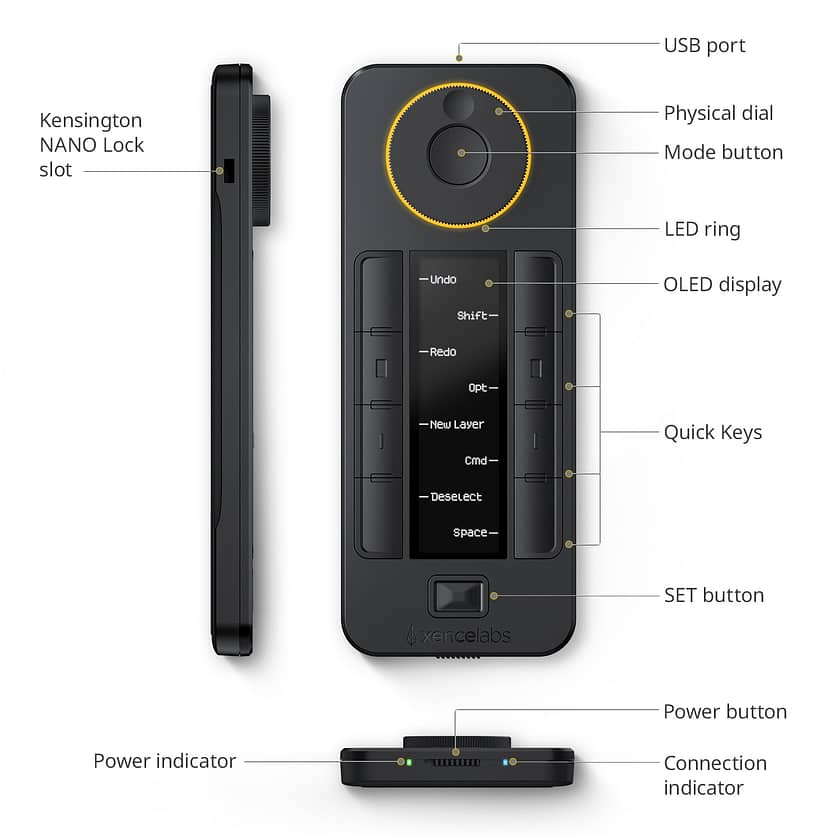
Unlike the Stream Deck, the Quick Keys is smaller, a more rectangle shape, and wireless. Thankfully – it is not bluetooth. Bluetooth devices in my experience can be very unreliable, and are almost impossible to use if your computer is in a machine room or not near where you are working. Instead, the Quick Keys comes with a simple, USB dongle that works as it’s wireless receiver. I plug this into the back of my Blackmagic Editor Keyboard on my desk. The reception anywhere in my suite is great, even though my workstation is in a machine room.
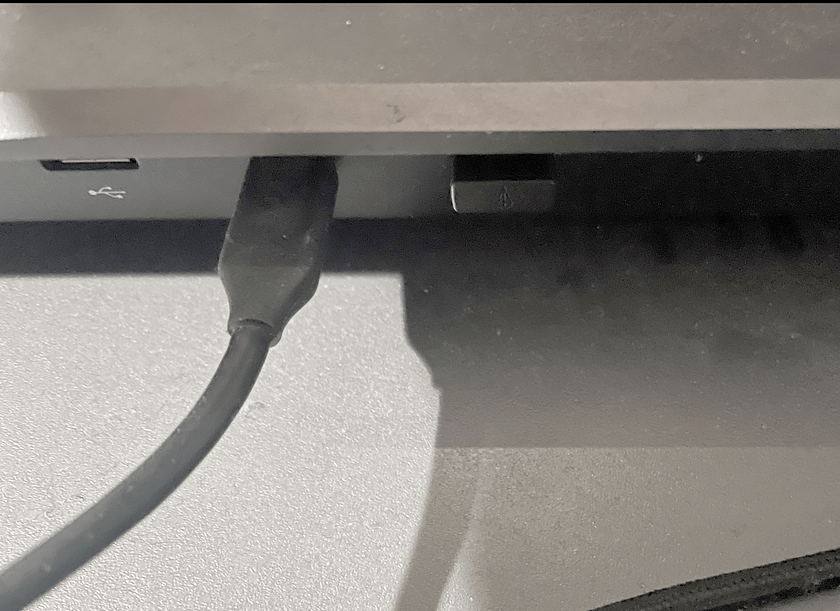
Build quality is excellent. It’s plastic, but a nice solid plastic and the buttons have a good feel to them. The wheel is smooth and doesn’t feel loose or wobbly.
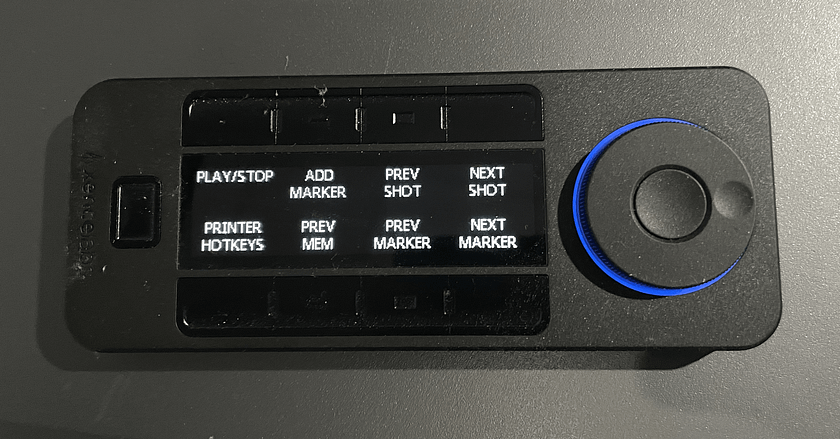
Software
Much like the Stream Deck – Quick Keys has a simple program to map its functions. Unfortunately – it is a bit basic. You can map hotkeys to any buttons, add modifiers, do some basic OS functions like launch applications, and emulate mouse clicks. You can also make multiple pages, and change labels.
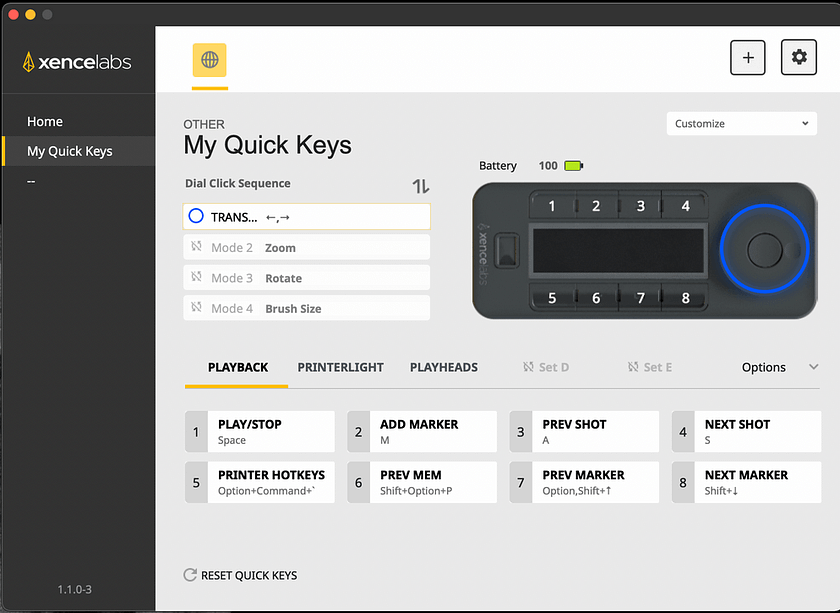
There aren’t plug-in, macro, or other advanced capabilities like the Stream Deck has. I’m hoping the software evolves a bit over time – but even as it is now, it’s very easy to get started.
That said – the Quick Keys software does have a really cool feature that nobody else has – it can directly control functions on their digitizing tablets. I didn’t end up buying one of the tablets – but seeing the integration possibilities I am definitely still thinking about it.
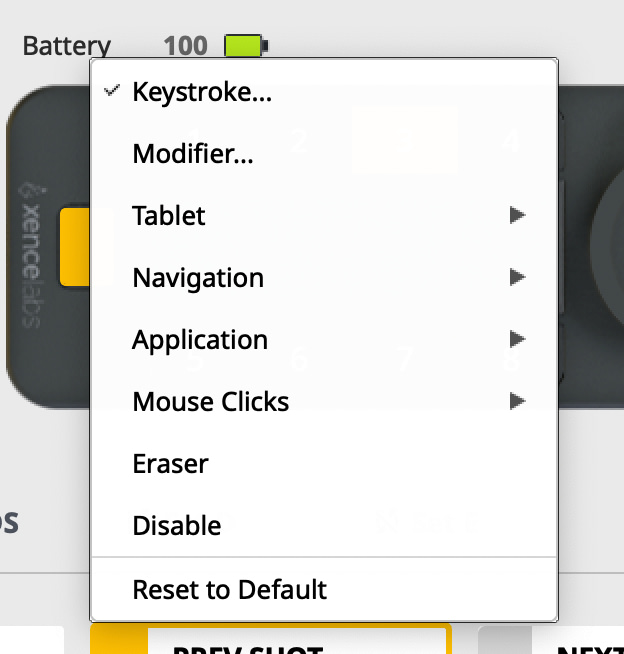
Using The QuickKeys
So what do I use the QuickKeys for? I think of it as a dedicated remote control for my Resolve workstation!
I firmly believe that with long form work – sometimes it’s important to just sit down and watch the show as if you were a viewer. This means a big screen, and no distractions. No scopes. No Resolve UI. No color control surface. No email, keyboards, buttons, nothing. This type of watch-down is great for focusing on subjective aspects of the grade like flow, shot matching, and emotion.
With this in mind, I’ve set up the wireless QuickKeys to be the ultimate controller for reviewing shows and films from the couch, looking at my 55” LG OLED client monitor.

I have a default layout that lets me play, stop, navigate between shots, and even jog forward and backwards and leave markers. If I want to compare a shot, I have another page with multiple playheads to bounce back and forth between shots.
Ergonomically you can comfortably hold it vertically like a TV remote, or horizontally to make better use of the wheel.
Quick Keys: My Verdict
While not quite the slam dunk I think the Stream Deck Pedal is, for the same $90 price point it is a very well built and useful device. I love the feel of it, and the wireless hardware works perfectly.
The Quick Keys could also certainly be used in other ways than just a remote control. It could do a lot of the same things I’m doing with Stream Decks, and it could be configured for repetitive tasks like rotoscoping, tracking, or dust busting.
I would like to see some more advanced features in the software however, and more customization options. Changing pages on the device is also a bit slow – I would love to have the option to change the delay to be faster. Down the road – I would also love to test out the integration with their tablets.
One Small Ergonomic Upgrade
I’ve used Aeron chairs for over 20 years. I’ve always liked them, and have two in my suite. Recently though, I’ve been exploring some different ergonomic options. I’m still keeping my trusty Aerons – but I decided to try adding a headrest.
A lot of different companies make aftermarket headrests for the Aeron – but Atlas Headrests’ attention to detail and quality drew me in. They claim to use the same mesh and frame materials as Herman Miller, and can even match different colors. After receiving my headrest, the finish matches my chair perfectly. This results in an upgrade to the chair that looks exactly like it came from the factory.

Comfort-wise, its a really nice addition. I’m not actively working leaning that far back – but it’s really nice to just be able to rest my head back for a minute or two every so often during the day. It’s also really comfortable for watch-downs or QC passes, or for zoom meetings and conference calls.
The headrest is adjustable in height, tilt, and how far forward it is. This means it should fit most people. The price is a bit steep at $179.99, but I’m happy with it. The comfort and build quality are worth it – if you’re looking to add a headrest to your Aeron, Atlas is worth a look.
Premium Members: Download My Stream Deck Pedal and Quick Keys Layouts
Premium Mixing Light Members: To give you a starting point if you choose to invest in either the Stream Deck pedal or the Quick Keys – I’ve included my layouts for hardware devices as a download for premium members. Just keep in mind – I’m using some custom Resolve key mappings here, so you may need to adjust to your keyboard layout.
Is there a piece of control hardware you’ve been wanting to explore?
Let me know in the comments! I’ll probably end up buying it and reviewing it here on Mixing Light!
-Joey
Additional Downloads
Sorry... downloads are available for Premium Members only.
Become a Premium Member

